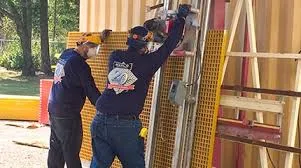
-
 Afrikaans
Afrikaans -
 Albanian
Albanian -
 Amharic
Amharic -
 Arabic
Arabic -
 Armenian
Armenian -
 Azerbaijani
Azerbaijani -
 Basque
Basque -
 Belarusian
Belarusian -
 Bengali
Bengali -
 Bosnian
Bosnian -
 Bulgarian
Bulgarian -
 Catalan
Catalan -
 Cebuano
Cebuano -
 China
China -
 China (Taiwan)
China (Taiwan) -
 Corsican
Corsican -
 Croatian
Croatian -
 Czech
Czech -
 Danish
Danish -
 Dutch
Dutch -
 English
English -
 Esperanto
Esperanto -
 Estonian
Estonian -
 Finnish
Finnish -
 French
French -
 Frisian
Frisian -
 Galician
Galician -
 Georgian
Georgian -
 German
German -
 Greek
Greek -
 Gujarati
Gujarati -
 Haitian Creole
Haitian Creole -
 hausa
hausa -
 hawaiian
hawaiian -
 Hebrew
Hebrew -
 Hindi
Hindi -
 Miao
Miao -
 Hungarian
Hungarian -
 Icelandic
Icelandic -
 igbo
igbo -
 Indonesian
Indonesian -
 irish
irish -
 Italian
Italian -
 Japanese
Japanese -
 Javanese
Javanese -
 Kannada
Kannada -
 kazakh
kazakh -
 Khmer
Khmer -
 Rwandese
Rwandese -
 Korean
Korean -
 Kurdish
Kurdish -
 Kyrgyz
Kyrgyz -
 Lao
Lao -
 Latin
Latin -
 Latvian
Latvian -
 Lithuanian
Lithuanian -
 Luxembourgish
Luxembourgish -
 Macedonian
Macedonian -
 Malgashi
Malgashi -
 Malay
Malay -
 Malayalam
Malayalam -
 Maltese
Maltese -
 Maori
Maori -
 Marathi
Marathi -
 Mongolian
Mongolian -
 Myanmar
Myanmar -
 Nepali
Nepali -
 Norwegian
Norwegian -
 Norwegian
Norwegian -
 Occitan
Occitan -
 Pashto
Pashto -
 Persian
Persian -
 Polish
Polish -
 Portuguese
Portuguese -
 Punjabi
Punjabi -
 Romanian
Romanian -
 Russian
Russian -
 Samoan
Samoan -
 Scottish Gaelic
Scottish Gaelic -
 Serbian
Serbian -
 Sesotho
Sesotho -
 Shona
Shona -
 Sindhi
Sindhi -
 Sinhala
Sinhala -
 Slovak
Slovak -
 Slovenian
Slovenian -
 Somali
Somali -
 Spanish
Spanish -
 Sundanese
Sundanese -
 Swahili
Swahili -
 Swedish
Swedish -
 Tagalog
Tagalog -
 Tajik
Tajik -
 Tamil
Tamil -
 Tatar
Tatar -
 Telugu
Telugu -
 Thai
Thai -
 Turkish
Turkish -
 Turkmen
Turkmen -
 Ukrainian
Ukrainian -
 Urdu
Urdu -
 Uighur
Uighur -
 Uzbek
Uzbek -
 Vietnamese
Vietnamese -
 Welsh
Welsh -
 Bantu
Bantu -
 Yiddish
Yiddish -
 Yoruba
Yoruba -
 Zulu
Zulu
frp chimney construction and installation for industrial and ...
FRP Chimney Construction and Installation for Industrial Applications
Fiber Reinforced Polymer (FRP) chimneys have emerged as a popular solution in industrial settings due to their unique combination of strength, corrosion resistance, and lightweight properties. With the growing need for sustainable and durable infrastructure in various industries, the construction and installation of FRP chimneys have gained significant attention.
Advantages of FRP Chimneys
One of the primary advantages of FRP chimneys is their exceptional resistance to corrosive environments. Industries such as chemical processing, oil and gas, and power generation often face severe conditions that can degrade traditional materials like steel and concrete. FRP, composed of a polymer matrix reinforced with glass or carbon fibers, exhibits excellent resistance to chemical attacks, making it an ideal choice for chimney applications where emissions might contain harmful substances.
In addition to their corrosion resistance, FRP chimneys are remarkably lightweight compared to their traditional counterparts. This characteristic not only simplifies handling and transportation but also reduces the structural load on supporting structures. The ease of installation can accelerate project timelines and lower labor costs. Moreover, the modular design of FRP components allows for flexibility in customizing sizes and shapes to fit specific industrial requirements.
Construction Process
The construction of FRP chimneys typically begins with careful planning and design. Engineers assess the specific needs of the facility, including height requirements, internal diameter, and exposure to environmental factors. Utilizing advanced software modeling tools, they create detailed designs that comply with industry standards and regulations.
frp chimney construction and installation for industrial and ...

Once the design is finalized, the manufacturing process begins. FRP components are usually produced off-site in controlled environments that ensure uniform quality. The manufacturing process involves laying down layers of fiberglass and resin to form composite sections, which are then cured to achieve the desired strength.
After the components are produced, they are transported to the installation site. The lightweight nature of FRP materials facilitates easy handling, often allowing for installation with minimal heavy machinery. The assembly is typically done using bolted connections, which simplifies maintenance and modifications in the future.
Installation Considerations
While the installation of FRP chimneys is straightforward, several key considerations must be adhered to in order to ensure safety and efficiency. Proper anchoring is critical to withstand wind loads and seismic forces. Therefore, detailed anchoring plans are required, and all components must be aligned accurately to avoid structural weaknesses.
Additionally, ongoing maintenance and inspection protocols should be established to ensure the longevity of the chimney. Although FRP materials are durable, regular inspections can help identify any potential issues early on, preventing costly repairs down the line.
Conclusion
In conclusion, FRP chimneys offer a robust solution for industrial applications requiring durability and corrosion resistance. Their unique properties enable rapid construction and installation, making them an attractive choice for modern industrial needs. As industries continue to evolve and face challenges related to sustainability and efficiency, the adoption of FRP technology in chimney construction is poised to grow, paving the way for innovative infrastructure solutions. With ongoing advancements in materials science and engineering, the future of FRP chimneys appears bright, ensuring safe and effective emission management in industrial environments.
Latest news
-
Fiberglass Storage Tanks Durable & Corrosion-Resistant FRP SolutionsNewsJun.03,2025
-
Fiberglass Dual Lamination Products Durable GRP SolutionsNewsJun.03,2025
-
GRP Playground Equipment Durable FRP & Fiberglass Play StructuresNewsJun.03,2025
-
Molded Fiberglass Grating Durable & Corrosion-Resistant SolutionsNewsJun.01,2025
-
Rock Drilling Tools for Tunnels Heavy-Duty Specially-Designed SolutionsNewsJun.01,2025
-
GRP, Fiberglass & FRP Products for Thermal & Nuclear Power Plants Durable SolutionsNewsJun.01,2025









